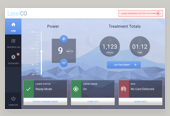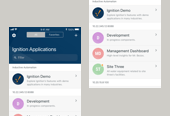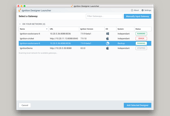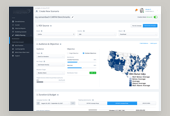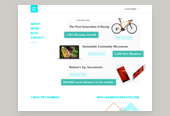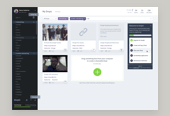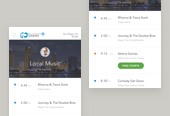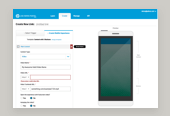Setting arbitrary titles aside for a moment – this article is really about the transition many designers make between simply designing for beauty and designing for something more. It’s about the true role of a designer in problem solving and how that relates to communication with the client and user.
Being a product designer means presenting final designs to your audience with confidence and more importantly, justification. If you cannot defend all aspects of your solution, circle back and determine what needs to be dropped. Less is more. Truly great designers never the gild the lily, but instead focus on the elements of their solutions that truly bring value.
The role of a designer boils down to solving problems. The difference between just designing a pretty UI and designing with a more holistic product mentality is this meaningful purpose and justification behind each design element. This substantiation along with being able to communicate a solution to your client makes is what separates the two disciplines.
Some strategies I’ve developed over the years that you can use to make this transition to more of a design-thinking role in your work include:
Playing the Why Game
A quick technique that is hugely helpful in preparing for the inevitable questions of why from a client is something I’ve dubbed the Why Game. Think back to your days as an annoying child, always asking why, over and over again and there you have it. Enlist someone on your team (or someone you are comfortable with if you’re a solo designer) to play the devil’s advocate role with you as you present your work.
Instruct this person to relentlessly ask you “why”? Responding because or it looks good are unacceptable answers in the Why Game. Have them question things that you are perhaps taking for granted in your work. Why are you using sans serif typeface? What does this image mean? Why are you using thin lines in the illustration? On and on.
This will leave you ready to make small, meaningful changes to the work and hopefully ready to defend even the smallest design detail. Presenting to your actual client after exhaustively defending your work in a practice round is a fun and easy task.
Presenting One Solution
Don’t present options just because you think you should. Present the best single solution that you were able to develop. Don’t stop developing options, these are a core part of the design process and a great thing to have at the ready to discuss why you did not choose them. I’m simply advising you to not present these to your client.
Options should come earlier in your process and be discussed with your internal team. Have a series of check-in meetings with your team to discuss the options early in the process. After a few rounds of critique and discussion, you will be empowered to present only the best solution to your client and explain to them why it is so. You will also have a stronger rationale behind your one, best solution.
You are the design authority in this relationship, so educate your client as to why this is the best solution for the problem at-hand.
Transferring your knowledge to the client is a key part of being a trusted consultant and partner on projects. Design decisions are second nature and obvious within our community, but getting your clients on the same page is where the consulting and director aspect of design really comes into play.
Building Systems, Not Screens
Changing your design thinking to larger systems, rather than one-off screens can be hugely transformative in how you approach new projects. A solid design system ensures consistency – even after you’ve handed off a project. Systems set you and your client up for a successful outcome.
First and foremost, a design system should be based on a meaningful structure. Dependant upon the project scope, this structure can materialize as numerous things. This includes aligning your interface layout to a grid system, following a meaningful typographic hierarchy, defining a color palette with color theory in mind or simply handing off some documentation along with your design solution.
Documenting your design work is necessary but doesn’t need to be a novel. You should realize that unless the product is wholly your own it will change after your role ends. It’s up to you to craft and document a solid groundwork so that your best solution can live on.
The client should be able to confidently explain and extend upon your design system once you’re gone.
Just remember that the more systematic and documented your design approach was, the more likely the next designer or development team will be to understand and iterate upon your work.
Always remember. The power of great design lies in its ability to solve real problems and overcome challenges. The best design is generally humble or even invisible — not sexy nor particularly interesting.
Keep learning, keep growing. Work hard & be nice to people.
Published by: Ray in Best Practices, Thoughts, User Experience
